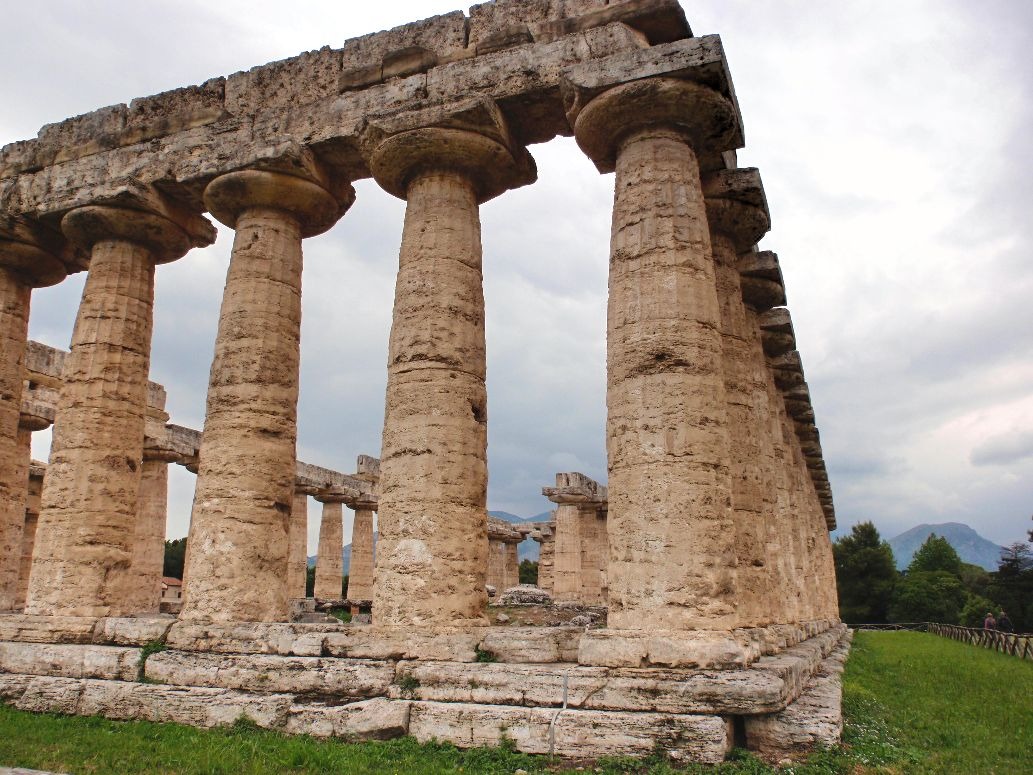
The growth of Selinus and Himera during this period indicates the Carthaginians and Greeks did not confront one another at this time. The Carthaginian Malchus is said to have "conquered all Sicily" and sent captured booty to Tyre some time after 540 BC, which probably meant that Motya, Panormus and Solus had fallen under Carthaginian control. This prosperity enabled some of the Greek cities to start to expand their territories again, ultimately leading to the events known as the First Sicilian War. Trade also flourished between the natives, the Greeks and the Phoenicians, and the Greek colonies became prosperous. Conflicts among the Greek colonies and between the natives and Greeks had erupted, but these were mostly localized affairs. In Sicily, the Ionian Greeks on the whole had friendly relations with native Sicilians and the Phoenicians, but the Dorian Greek colonies were comparatively more aggressive, expanding inland from the coast at the expense of the natives to expand their domain. The Greeks living in this area behaved pretty much like the mainland Greeks, expanding their political and commercial domain at the expense of their neighbours while keeping the feud between the Ionians and the Dorians alive. The Greek-colonized zone encompassing Sicily and southern Italy came to be known as Magna Graecia. The next known Greek incursion took place 70 years later.

The Phoenicians in Sicily and the Elymians had united to defeat the Greeks of Selinus and Rhodes near Lilybaeum in 580 BC, the first such recorded incident in Sicily.

During the 6th century BC, mostly under the leadership of the Magonid dynasty, Carthage established an empire which would commercially dominate the western Mediterranean until the 2nd century BC. Phoenicians initially (750–650 BC) did not choose to compete with the Greek colonists, but after the Greeks had reached Iberia sometime after 638 BC, Carthage emerged as the leader of Phoenician imperialism. Carthaginian hegemony Ĭarthage created its hegemony in part to resist Greek encroachments in the established Phoenician sphere of influence. These Phoenician cities remained independent until becoming part of the Carthaginian hegemony some time after 540 BC. They had traded with the Elymians, Sicani and Sicels and had ultimately withdrawn without resistance to Motya, Panormus and Soluntum in the western part of the island when the Greek colonists arrived after 750 BC. The Phoenicians had established trading posts all over the coast of Sicily after 900 BC, but had never penetrated far inland.


These two rivals fought their wars on the island of Sicily, which lay close to Carthage. The Greeks, like the Phoenicians, were expert sailors who had established thriving colonies throughout the Mediterranean. This, coupled with its success and growing hegemony, brought Carthage into increasing conflict with the Greeks, the other major power contending for control of the central Mediterranean. They had inherited their naval strength and experience from their forebears, the Phoenicians, but had increased it because, unlike the Phoenicians, the Punics did not want to rely on a foreign nation's aid.
#MAGNA GRAECIA ROMAN REPUBLIC SERIES#
The Sicilian Wars, or Greco-Punic Wars, were a series of conflicts fought between ancient Carthage and the Greek city-states led by Syracuse, Sicily over control of Sicily and the western Mediterranean between 580 and 265 BC.Ĭarthage's economic success and its dependence on seaborne trade led to the creation of a powerful navy to discourage both pirates and rival nations. For the Roman civil war, see Bellum Siculum. This article is about the wars between Greece and Carthage.


 0 kommentar(er)
0 kommentar(er)
